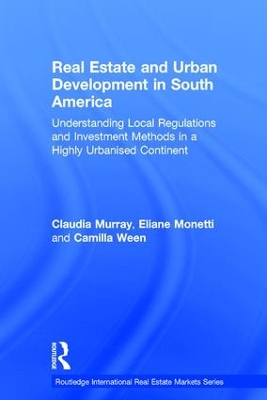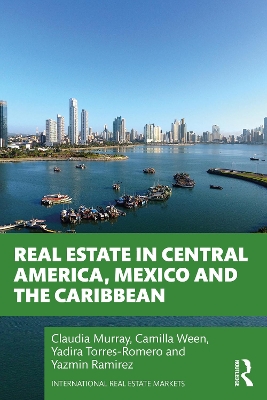Routledge International Real Estate Markets
2 total works
Real Estate and Urban Development in South America
by Claudia Murray, Eliane Monetti, and Camilla Ween
Real Estate and Urban Development in South America uncovers how investors are navigating South American real estate markets in commercial, residential and infrastructure development. A preferred location for real estate development during the colonial era, in recent decades South America has been seen as high-risk for global real estate investors. This book explores the strengths and weaknesses of real estate markets in the region, concluding that with careful implementation of the correct development strategies, the region can once again take its place at the centre stage of global real estate investment.
Comparing the economics and market maturity of South American countries in turn, the authors draw out the particular contexts in which investors and developers operate in mature and emerging markets. Bridging the gap between theory and practice, analysis of local development policies, legislation, valuation methods and taxation is supplemented with case studies from key players in the region's major cities. The first full overview of real estate markets in South America, this book will be an essential guide for investors, policy makers, academics and students with an interest in this this rapidly evolving region.
Real Estate in Central America, Mexico and the Caribbean
by Claudia Murray, Camilla Ween, Yadira Torres, and Yazmin Ramirez
This book examines real estate markets and urban development in Central America, Mexico and The Caribbean (CAMEC). It considers both residential and commercial real estate with a focus on industrial and hospitality sectors, infrastructure and logistics.
The CAMEC region is besieged by complexity. Prone to natural disasters, and with the Mexico/US border constituting the largest human migration corridor on Earth, the region is also a vital trading hub for goods, linking commerce between the world’s two largest oceans and the Americas. The real estate markets in this area are dynamic, rapidly developing and under researched. This book analyses the particularities of these markets and the context in which investors and developers operate. The authors present case studies and contributions from key players in major cities in the region. The book exposes the regional risks and opportunities connected to urban development including market transparency, urban equity and development regulation. The research presented in this volume gives the reader a comprehensive picture of each country under study, detailing their individual commercial, residential, industrial, leisure and infrastructure sectors.
This is essential reading for international investors, real estate students, researchers, and professionals with an interest in the region.

